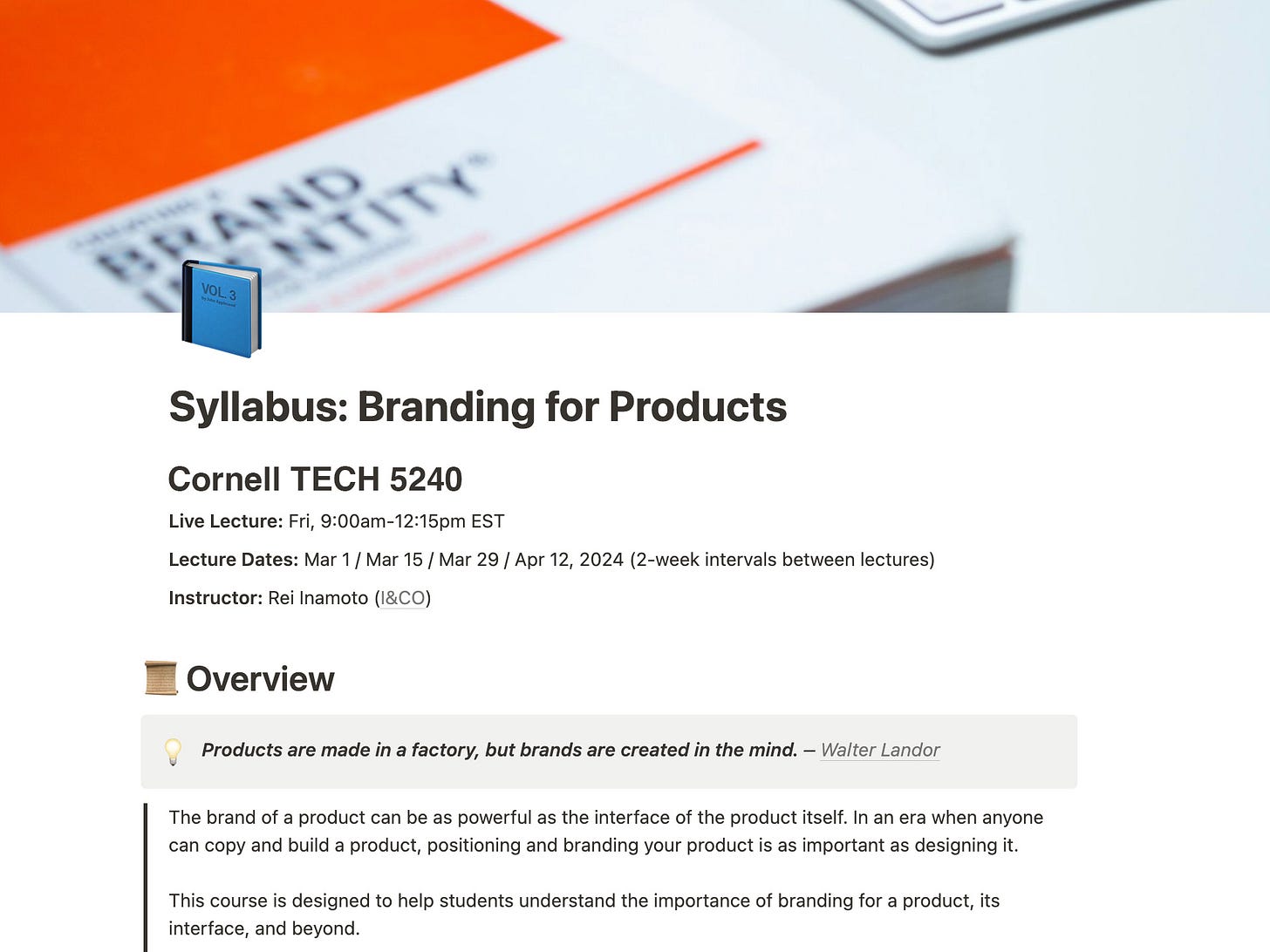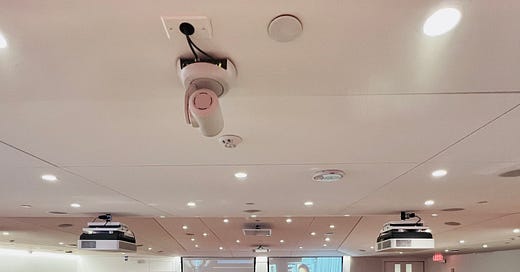Are Online Courses Worth It?
Before AI, COVID was supposed to disrupt higher education. Instead, it helped some milk their luxury brand status.
Remote Teaching
I have kids ranging from 15 to three years old. My oldest son is a sophomore in high school and the second is entering high school this fall. Thoughts about their college applications and potential subsequent majors have entered our minds and conversations as parents.
In addition to my exposure, as a parent, to the current state of education at various stages, I also have exposure to higher education through my teaching at Cornell Tech, one of Cornell University’s graduate schools with a campus in New York City.
I’ve been teaching courses in entrepreneurship, design, and branding to MBA and Engineering students since the fall of 2017 except for 2020 and 2023. Those breaks were due to COVID and my work travel schedule respectively. In the spring of 2021, when I went back to teaching, all professors and instructors were asked to teach online.
Before doing so, I took a few online courses to inform myself of how others were teaching remotely. Instead of asynchronous classes offered on, say, Coursera or MasterClass which was being advertised heavily and relentlessly during COVID years, I deliberately chose courses that had a real-time component, such as Section School. That is, there was some type of live interaction with instructors and possibly with other students, as that would be most analogous to my teaching experience at Cornell.

In the fall of 2021, For 10 weeks, I would get online every Thursday afternoon for 90 minutes to teach. Every student was in their respective corners of the world, including a good portion of students based in Asia who had to Zoom in at 3 or 4 am in their time zones as my course was optimized for the New York time zone. Not my decision, to be clear.
Aside from these hurdles, I found teaching college—particularly graduate-level students—online surprisingly smooth and convenient.
For one, needless to say, it cut down my commute time to campus. This was not a small factor as, even though Cornell Tech’s campus is in NYC, it is on Roosevelt Island, a small sliver of an island in the East River with only one subway line going there. With the temperament of the NYC Subway, the commute could take at least an hour and a half, if not two, adding up to about 4 hours I could save for commuting each class.
In addition, by utilizing various tools such as the polling feature in Zoom, the collaborative nature of Google Slides/Docs, threads in Slack, and well-organized layouts in Notion, I found new ways of engaging and interacting with students that were either a good replica or in some instances, enhancement to the previous ways. These were tools available before COVID but I hadn’t used them that much in my teaching capacity.
At the same time, some unsavory habits also transferred to the virtual environment.
In a physical classroom, those who sit in the back of the room are typically less engaged. I must admit I often sat in the back of the classroom in college. In a virtual environment, the back of the classroom is replaced with whether their cameras are on or off. Those students become invisible.
Elite Schools as Luxury Brands
Free or extremely affordable online education businesses such as Khan Academy and Coursera existed years before COVID.
Many thought, in 2020, that COVID would disrupt education in significant and profound ways. Some argued that higher education institutions would have to bring their tuition down significantly since, supposedly, not attending and teaching in person would be a lot more cost effective than in-person. This never happened.
Luxury works because of scarcity. That allows for higher price points. If it becomes freely or cheaply available, how would elite schools maintain their luxury brand status?
It turns out that COVID helped some elite schools milk their status.
Last year, a friend of mine took a graduate-level psychology course from the University of Pennsylvania on Coursera. It was a $45/month, 4-month but self-paced course. She ended up finishing in two months, costing her $90 in total. She felt what she got out of it was worth much more than $90. As a satisfied customer of higher education online, she decided to enroll in another, this time, Stanford’s online course. This was $670 for an 8-week program.
To her surprise, the modules from Stanford were light and shallow, and most videos seemed to have been repurposed from YouTube, TED, or other free sources. It only had two modules in contrast to UPenn’s eight modules on Coursera. She was disappointed by the overall quality of such a prestigious school. The UPenn course on Coursera was “ten times cheaper but ten, if not, twenty times better in quality than Stanford’s,” according to her.
COVID made us realize what we were willing to tolerate doing online and pay for. Learning was such a thing.
Digital is about taking what was for the elite and making it available to the masses. Services like Coursera give access to quality education at a significantly reduced cost.
Some elite schools are doing mind jujitsu: offering online courses that seem drastically cheaper than what they would be in person but still keeping price points relatively or even significantly higher.
No brand likes to give up its luxury brand status.
AI in the classroom
COVID didn’t disrupt education, including college and graduate-level education, as much as many thought. It’s likely a different story with AI coming into the classroom.
Next week, I will share my takeaways from letting students actively use AI and what it does to them and their outputs.
Please hit reply with any feedback, thoughts, or questions. I’d love to hear from you.






